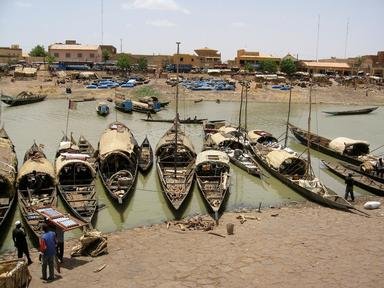17. What was the capital city of the Mali Empire? Hint: it is not the name you probably recognize from the given options!
From Quiz The Mali Empire
Answer:
Niani
Niani, located in present-day Guinea, served as the capital city of the Mali Empire. It was strategically situated near the Niger River, allowing for easy trade and communication. Niani was the political, economic, and cultural center of the empire, and was established by the first emperor, Sundiata. It housed the royal court, administrative offices, and the emperor's palace. The city flourished with vibrant markets, skilled artisans, and intellectual activities.
Timbuktu (in modern Mali) played a prominent role as a cultural and intellectual centre. It flourished as a renowned center of Islamic scholarship, attracting scholars, traders, and travelers from various parts of the world and became a hub for the exchange of knowledge, particularly in the fields of religion, science, mathematics, and literature.








 Quick Question
Quick Question